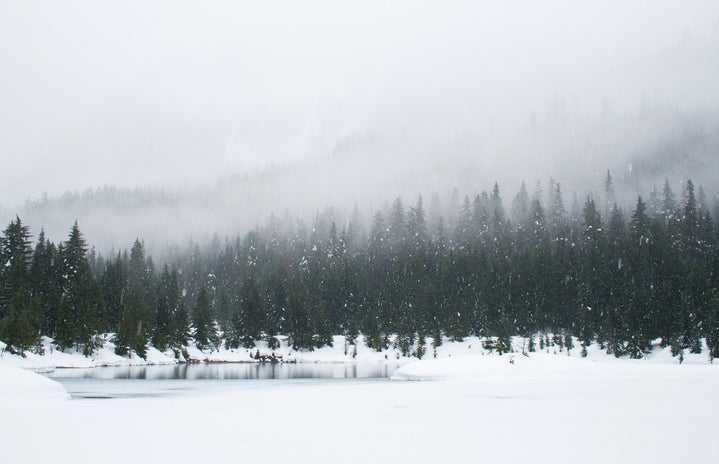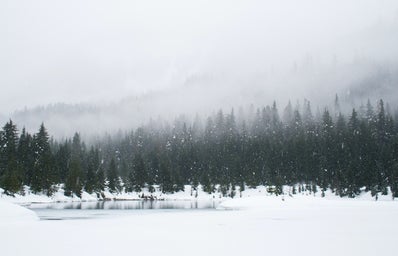As a midwestern native, I have experienced my fair share of relentless cold seasons with wet, blistering, below-freezing temperatures. Growing up all too familiar with the process of bundling up with layers upon layers just to go outside to complete simple tasks has provided me with valuable insight on how to prepare for the winters–something that my friends from warmer climates, like California and Arizona, have not been as educated about.
How to Dress
The first major snowfall can be a thrilling experience for children and adults alike across the country due to its increased accessibility to outdoor winter activities. However, long outdoor exposure during snow activities can also increase your risk of several safety hazards if you are not properly prepared.
To dress for cold weather, a minimum of three layers are recommended so that you can always remove layers if you get too hot. Begin with a thin base layer that acts as moisture management against your skin. Base layers are typically a tighter material to absorb and evaporate your sweat, while still being stretchy enough to provide flexibility. Base layers can be found as tops, like long sleeves, and bottoms such as tights. On top of a base layer, should be some sort of insulated mid-layer, like a fleece or puffy jacket, to trap the heat. Outer layers, or shell layers, can be found as both jackets or pants, and are used for precipitation protection to protect you from the harsh wind, rain, and snow while still being breathable enough to prevent overheating.
Once you have your main layers down, you aren’t ready to have your snowball fight quite yet! You also need to consider putting on multiple layers of socks (preferably wool), and accessories such as a heavy-duty hat, wool or polyester gloves (not cotton), scarves, and even a neck gaiter. Footwear choice is also important when going outside in the winter weather. Try to opt for shoes or, more favorably, boots that have good insulation and reliable traction in combination with thick socks to fully protect your feet.
Identifying Cold Injury
It is critical to note that if you are taking part in snow activities in sub-zero temperatures, such as sledding and snow tubing, skiing/snowboarding, hiking, ice skating, or simply shoveling snow, frostbite can occur in as little as 30 minutes and can affect any exposed skin. Frostbite is typically a cold injury that affects small extremities, such as fingers and toes, but can also dramatically impact blood circulation within the ears, nose, and cheeks. Any sort of numbness, tingling, severe stinging, or aching, accompanied with blue or pale skin is a very good indication that possible frostbite may be setting in and that it is necessary to find a place to warm up.
Alternatively, at -30 degrees Fahrenheit, hypothermia can develop in just ten short minutes. Hypothermia represents a drop in core body temperature and is considered a much more serious cold injury than frostbite. Unlike frostbite, hypothermia can quickly become life-threatening if the symptoms are not addressed. Symptoms include excessive shivering, weakness, a glassy stare, impaired judgment, and loss of consciousness. If you notice any of these signs, it is imperative that you call 9-1-1 and move the individual to a warm shelter. With Boulder being both a mountain town and a college town, it is also vital to remind yourself to be safe on the slopes and to use alcohol in moderation as alcohol use can make hypothermia more dangerous.
Vehicle Winterization
If you are planning on using your car at all during the winter months, it is recommended to get your vehicle ready for cold use before the snow hits. Prior to the first major storm, maintenance checks and emergency preparation should be done to ensure your car is safe and secure. Dropping temperatures causes colder, denser air, which consequently lowers your tire pressure, so it’s a good idea to keep a tire pressure gauge in your car. If you live in a location that notoriously gets hit with large amounts of snowfall, perhaps invest in getting snow tires or even chains/cables for your tires.
Preparing an emergency kit to store in your car during the winter months is also essential to your safety, as it is much more beneficial to have it and not need it than to need it and not have it. This kit should generally contain items such as jumper cables, a snow/ice scraper, a tire pump, a cell phone with batteries or a portable charger, a battery-powered radio, a flashlight with extra batteries, and a first aid kit with additional plastic bags for sanitation. Materials such as extra hats, gloves, coats, blankets, food, and water should also be stored in the vehicle in case of an emergency. Keeping your gas tank full can also aid in avoiding ice buildup in either your tank or fuel lines, which will ultimately keep your car running smoothly.
Home Preparation
Staying inside during the cold weather is no guarantee that you are completely safe from its cruel dangers. Similar to how winterizing your car is important, winterizing your home is even more significant. Installing insulation in your home is an easy way to keep the cold air out of your shelter, and the warm air in. Insulating your pipes using foam tubes or insulation tape is also a good idea to prevent bursting when the temperatures fall below freezing. If there is a particularly cold spell, you may want to think about swapping out regular curtains for thicker, more insulated curtains to limit your exposure to the window air. Cleaning out your gutters before the first snow should also be prioritized to prevent clogging and cracking of the drain.
Lastly, you should get your HVAC systems serviced to ensure they are clean, working properly, and well ventilated. If you have a fireplace, look into inspecting the chimneys, and have an alternative reliable source of heat in case wood runs low. It’s also vital you change the batteries on your smoke detectors as well. Carbon monoxide, an odorless gas, is an additional consideration to look out for as heating systems are being used more. It is highly recommended to install a carbon monoxide detector in your home to alert you in case of the presence of the gas.
Enjoy your Holiday Season
Keeping this information in mind, you should be all prepared to enjoy your holiday season while still being responsible enough to protect yourself and your family from the cold weather. Regardless if you grew up in the bitter cold, or spent your winters in the warmth, it is key for everyone to remember how to stay safe in the snow.


